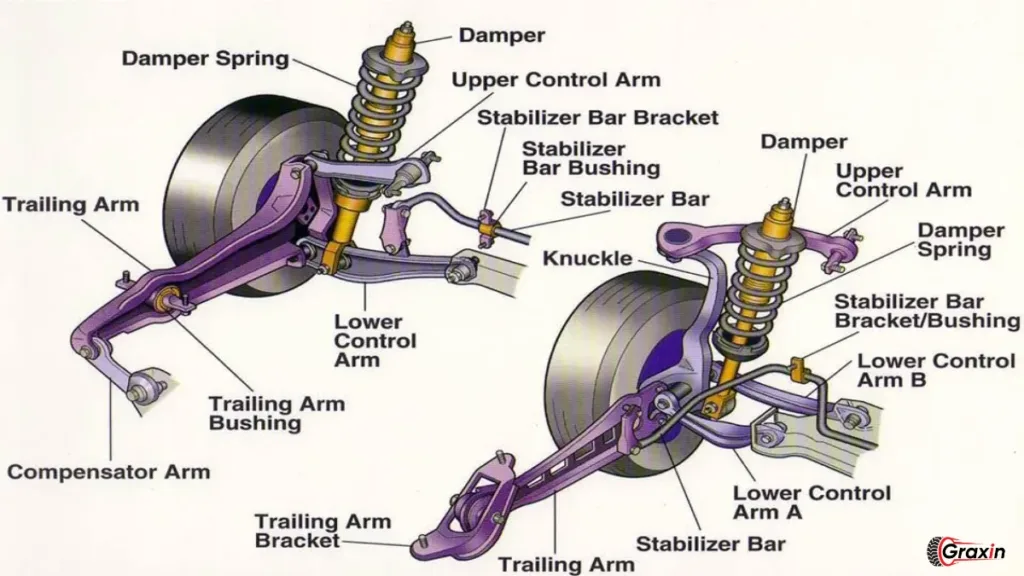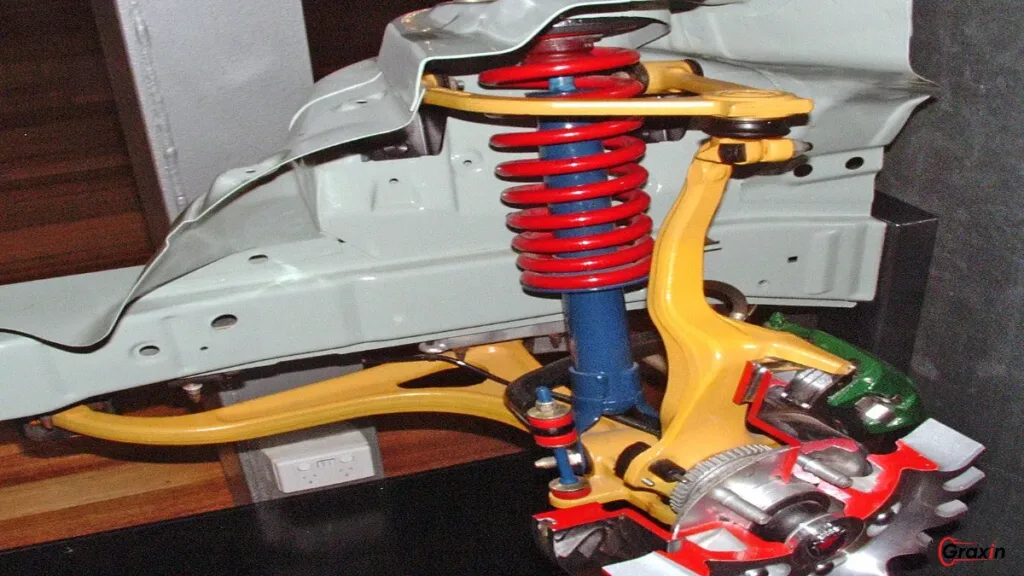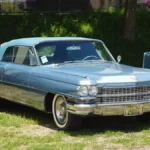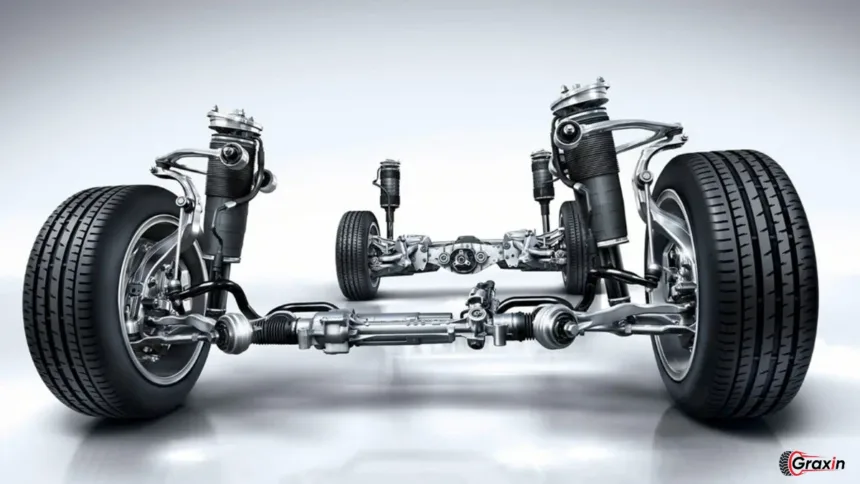Introduction to Double Wishbone Suspension
If there is one aspect of modern vehicle design which can be thought of as a comfort, control, and a perfectly safe ride on any terrain, then it has to be the suspension system. But what makes a double wishbone suspension regarded as one of the best designs? Let us first look at history, components, advantages, and how this changed the game in terms of vehicle performance.
What is a Double Wishbone Suspension?
A double wishbone suspension system, in simple terms, is a control arm consisting of an upper and a lower control arm that looks, literally, just like a wishbone. In this design, both the lower control arm and the upper control arm are attached at one end to the wheels and at the other to the vehicle’s chassis. This is part of the reason why it is applied in high-performance and luxury cars, as it provides relatively superior wheel control. How does it actually work?
For every one of its control arms, the system will keep on stabilizing and aligning the wheel with the road, depending on the speed or terrain of the vehicle. The system further has a ball joint and steering knuckle, making all the steering so precise and having smooth handling.
A Brief History of Suspension Systems

There were suspension systems for automobiles and vehicles on wheels as long as there were automobiles. The early days of transportation used horse-drawn carriages that had primitive suspension systems to minimize the ride. Then came the automobile with leaf springs and rigid axles. Early designs did work, but could not possibly provide the comfort or control needed for faster and more sophisticated vehicles.
Changes in times have led to increases in designs: for example, from the MacPherson strut to the multi-link suspension, each with a different balance regarding ride comfort, performance, and simplicity. The early double wishbone suspension was developed in the mid-20th century as a more advanced solution to improve handling and ride quality; since then, it has become a staple of performance vehicles.
Development of the Double Wishbone Design
It was not overnight that the double wishbone design came. The quest for a suspension system that provided ride comfort together with sharp handling encouraged the adoption of the double wishbone layout, which offers more accurate wheel control than the simpler designs, such as the MacPherson strut.
Manufacturers such as Honda, BMW, and Mercedes-Benz will popularize this double wishbone suspension throughout the 20th century on their performance and luxury vehicles and prove that it really works well on both track and road.
Key Components of a Double Wishbone Suspension
Upper and Lower Control Arms
The two control arms are called wishbones. In detail, it is attached to the wheel hub, and so much movement can be taken in. It is the two arms that have made the double wishbone system so stable, especially at cornering speeds. The upper and lower arms keep the wheels firmly pressed to the ground as much as the body of the car tilts.
Steering Knuckles and Ball Joints
This is the critical role of steering knuckles: letting the wheels pivot when a driver turns the steering wheel. Coupled with ball joints, these ensure the smooth turning and proper alignment of the wheels to give the driver a wonderful sense of feedback and control.
Advantages of Double Wishbone Suspension

Then it asks why double wishbone suspension should be preferred above all; one, for the fantastic roadholding. The independent movement of every wheel entails that effects from the road are well damped leading to an even smoother ride. It also enables better control through cornering because the suspension keeps the tires on the track far better.
Furthermore, the double wishbone setup is very adjustable. This will give engineers the room to adjust and fine-tune the system for better performance, comfort, or a balance of both.
Disadvantages of Double Wishbone Suspension
But it is not all sunshine and rainbows. This double wishbone system is more complex and expensive to make than a more simple model like the MacPherson strut. Where spatial occupation is concerned, the double wishbone is more intrusive than other systems, so not ideal for compact vehicles. It also sports a larger number of parts, which forebodes bigger failure points and expense to maintain.
Comparison with Other Suspension Types
Double Wishbone vs MacPherson Strut
The MacPherson strut is the more common design used for high-volume automotive production due to simplicity and lower costs. Although it cannot be compared to the ride quality or the precision of road handling with the double wishbone suspension, performance is a strong argument in favor of the latter system if performance is the first priority.
Double Wishbone vs Multi-Link Suspension
With double wishbone, some versions have disadvantages compared with multi-link suspension, especially with regard to complexity and personalization. In any case, though, double wishbone takes the lead regarding stability and predictability in handling performance.
Common Applications of Double Wishbone Suspension
Double wishbone suspension systems are very common on performance vehicles, luxury cars, and plush SUVs where handling or ride comfort is prioritized. Automakers choose this type of setup when they need a blend of performance with comfort, which is the reason it’s often seen in a car designed for high-speed cornering and track use.
The Future of Double Wishbone Suspension

With an electric and autonomous future, good times seem to lie ahead for the double wishbone suspension system. True principles of adaptability do really exist in these systems: with batteries-and thus added weight-forward handling would become possible while still based on the same modified platform. Lighter materials and designs will come with such efficiency improvements.
Conclusion
Summary In brief, the double wishbone suspension is the proper engineering solution that combines enough satisfactory performance and comfort with proper control. Though surely one of the more complicated and expensive suspensions, this variant offers handling and stability advantages that make it suitable for high-performance as well as luxury cars.
FAQs
- What are the benefits of double wishbone suspension for performance cars?
- It offers better handling, especially during cornering, and ensures that the tires remain in optimal contact with the road.
- Is the double wishbone suspension system better than a multi-link setup?
- Both have their pros and cons, but double wishbone systems generally offer better stability and control, especially for performance-focused vehicles.
- Why is the double wishbone suspension more complex?
- It has more components, such as two control arms per wheel, which allow for finer adjustments and more precise handling.
- Can double wishbone suspension improve off-road performance?
- Yes, it can enhance off-road performance by maintaining better tire contact with uneven terrain.
- How does the double wishbone suspension affect vehicle safety?
- It improves safety by providing better control and stability, especially during high-speed maneuvers.
Also Read : Torsion Bar Suspension: Comprehensive Analysis







